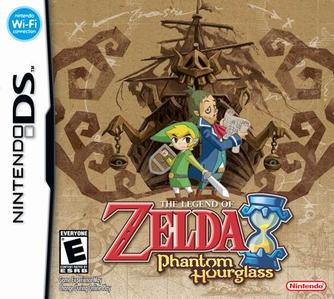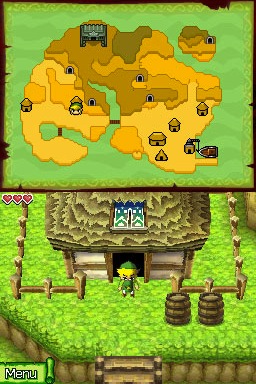

Title: |
|
Genre: |
|
|
Developer: |
|
|
Publisher: |
|
Release Date: |
|
Box Art Credit: |
|
On Wikipedia: |
|
System: |
|
This review was originally written in June 2015. The text has not been altered from its original form.
Let's see, where to begin? The beginning of Phantom Hourglass picks up right where The Wind Waker left off, with Link, Tetra, and her pirate crew sailing off for new lands. Niko, the youngest, rat-like pirate shows you (the player) cut-outs what happened in The Wind Waker complete with tunes from that game, and makes it clear that Tetra is Zelda (in case you forgot). Tetra decides to look for the "Ghost Ship" despite her superstitious crew, believing it to be a fraud, despite all the things that happened last game (being a princess from an ancient race, etc.). The Ghost Ship appears, Tetra boards, disappears, Link follows her, goes overboard, washes up on an island with a fairy resembling Navi, and the game kicks off from there. I recently replayed a bit of PH just to get a feel for it, and immediately, it goes for the "find a sword, teach you how to use it", which seems a bit silly remembering that this Link isn't some schlub in green, he IS the Hero of Winds, so doing sword practice seems demeaning. Almost immediately afterward, you go through the whole "the bridge is out, time to take a complicated 'shortcut' with some easy enemies to practice on" scheme that's familiar to video games.

You can draw on the map above, if you want. (Source: emuparadise.me)
Soon afterwards, you take on the first level of the Temple of the Ocean King, a quasi-dungeon that you need to keep returning to (and going deeper) after beating each real dungeon, and then you go on with Linebeck, a coward with a huge ego (needed for character development) to eventually find and rescue Tetra from the hands of the Ghost Ship. You can trace the path you want to go on the overhead map, which is fun (no need for wind), and having the ship gets its own heart meter means you won't fall out of it so easily when monsters inevitably attack you, though you do have a greater chance of screwing up.
It's been several years since I actually played through it (I remember first playing it in December 2007, actually, my brother played it first, even though I think I was the one that got it for Christmas) but I remember it to be fun though not particularly memorable. Of special note, everything is touch-screen controlled, including movement, sword-slashing, and gimmicks, so it lacks the same control as previous games did. In the end, it fitted into kind of an odd point on whether I liked it or not. Was it the best? No, not even close, and is often cited as one of the weakest entries in the series. It did not, however, leave a negative impression like Spirit Tracks did which was wrong in many ways.
FINAL RATING: 